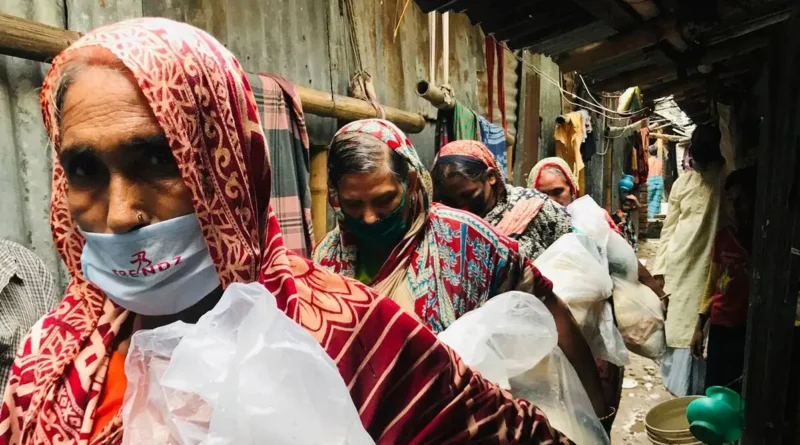Feminization of Poverty: Causes & Measures [100% UPSC]
The feminization of poverty is a complex issue that is driven by a range of factors such as socioeconomic status, access to education and employment opportunities, cultural attitudes, and political policies. The consequences of feminization of poverty can have far-reaching impacts on women’s health, well-being, and overall quality of life, as well as on their families and communities. Therefore, it is crucial to address the root causes of the feminization of poverty and develop effective strategies to mitigate its effects.
Understanding the phenomenon of feminization of poverty is important for UPSC exams as it highlights the gendered aspect of poverty and is relevant to India’s socio-economic and political context. It also has implications for policies aimed at reducing poverty and promoting gender equality.
Definition of Feminization of Poverty
Feminization of poverty refers to the disproportionate representation of women and female-headed households among those living in poverty. This phenomenon is characterized by the increasing trend of women experiencing poverty at higher rates than men, due to a variety of factors such as unequal access to education, employment opportunities, and economic resources, as well as the impact of cultural attitudes and political policies.
As a result, women are often more vulnerable to poverty and its consequences, such as poor health, limited education, and employment opportunities, and reduced economic mobility.
Causes of Feminization of Poverty
The following are the causes of the Feminization of Poverty:
1. Socio-economic Factors
Some of the socio-economic factors contributing to the feminization of poverty include unequal access to education and employment opportunities, wage discrimination, limited access to credit and financial resources, and the burden of caring for families and children. Women also tend to work in low-paying, insecure jobs and are overrepresented in the informal sector, which often lacks labor protections and benefits.
2. Political Factors
Political factors such as laws and policies that discriminate against women, lack of representation and decision-making power in political and economic spheres, and inadequate social safety nets can also contribute to the feminization of poverty.
3. Cultural factors
Cultural attitudes and norms that reinforce gender roles and stereotypes can limit women’s access to education and employment opportunities and restrict their ability to participate in the labor force. In some cultures, women are expected to prioritize caregiving responsibilities over paid work, leading to reduced economic mobility and increased vulnerability to poverty.
4. Globalization and its Impact
Globalization has had both positive and negative impacts on poverty, with women often being among the hardest hit. While globalization has created new economic opportunities, it has also increased competition and led to job losses in traditional sectors, particularly in developing countries. Women are often employed in low-paying jobs in these sectors, making them particularly vulnerable to poverty in a globalized economy.
Consequences of Feminization of Poverty
- Poor health and well-being.
- Reduced access to education and employment opportunities
- Increased vulnerability to violence and exploitation
- Limited economic mobility and reduced financial independence
- Negative impact on children’s health and development
- Strained family relationships and increased caregiving responsibilities
- Reduced participation in community activities and decision-making processes
- Difficulty accessing basic necessities such as food, shelter, and healthcare
- Increased risk of homelessness and poverty in old age.
Measures to Address Feminization of Poverty
A. Government Initiatives
- Implementing policies and programs aimed at promoting gender equality and reducing wage discrimination
- Increasing access to education, employment opportunities, and financial resources for women
- Providing affordable and accessible childcare services
- Improving representation and decision-making power for women in political and economic spheres
- Developing comprehensive social safety nets and pension systems
B. Non-Governmental Organizations (NGOs)
- Raising awareness and advocating for gender equality and women’s empowerment
- Providing education, training, and support for women to increase their economic opportunities
- Supporting women in the informal sector to improve their working conditions and economic security
- Providing resources and support for women experiencing poverty and violence
C. Community-Based Approaches
- Empowering women through community-led initiatives and programs
- Building networks and support systems for women to increase their access to resources and opportunities
- Promoting cultural and social attitudes that support gender equality
D. Role of International Organizations:
- Promoting and advocating for gender equality and women’s empowerment on a global level
- Providing resources and support for initiatives aimed at addressing the feminization of poverty
- Encouraging and supporting international cooperation to address the root causes and consequences of the feminization of poverty
- Monitoring and evaluating the effectiveness of programs and initiatives aimed at addressing the feminization of poverty.
Conclusion
In conclusion, the feminization of poverty is a complex and global issue that has far-reaching consequences for women, families, and communities.
Addressing the feminization of poverty requires a multi-faceted approach that addresses the root causes, such as unequal access to education and employment opportunities, wage discrimination, and cultural attitudes that reinforce gender stereotypes.
Moreover, effective solutions also need to take into account the unique challenges faced by women in different regions and contexts. This includes government initiatives, support from non-governmental organizations, community-based approaches, and the role of international organizations in promoting gender equality and women’s empowerment.
Addressing the feminization of poverty is essential for achieving sustainable and equitable economic growth and improving the well-being of women and communities around the world.
Thank You!
Also Read: Naxalism in India

